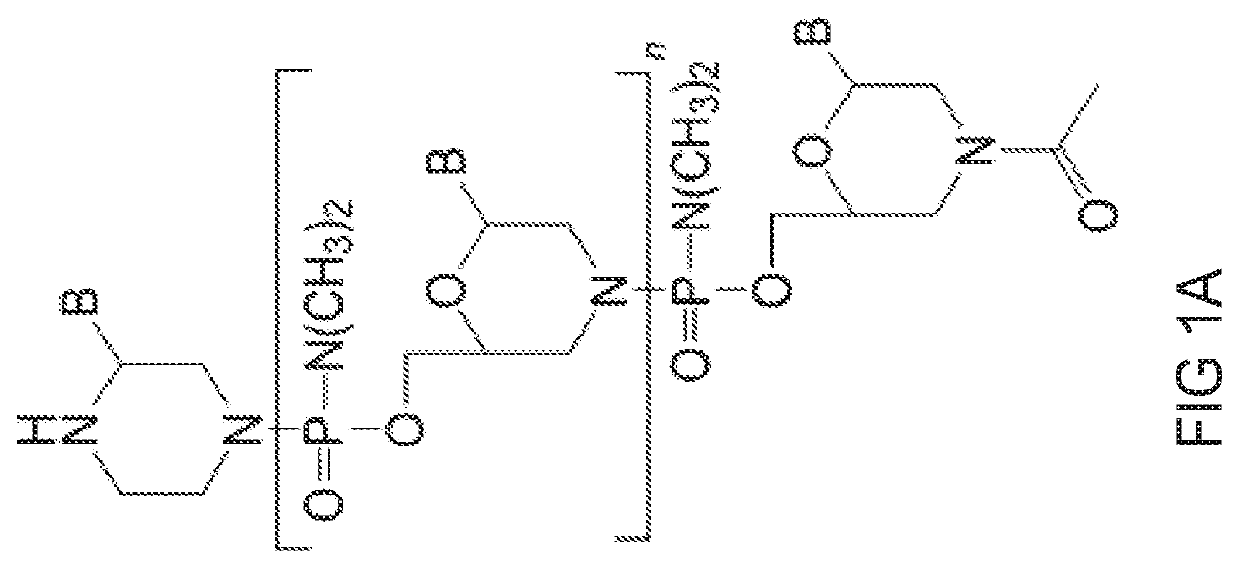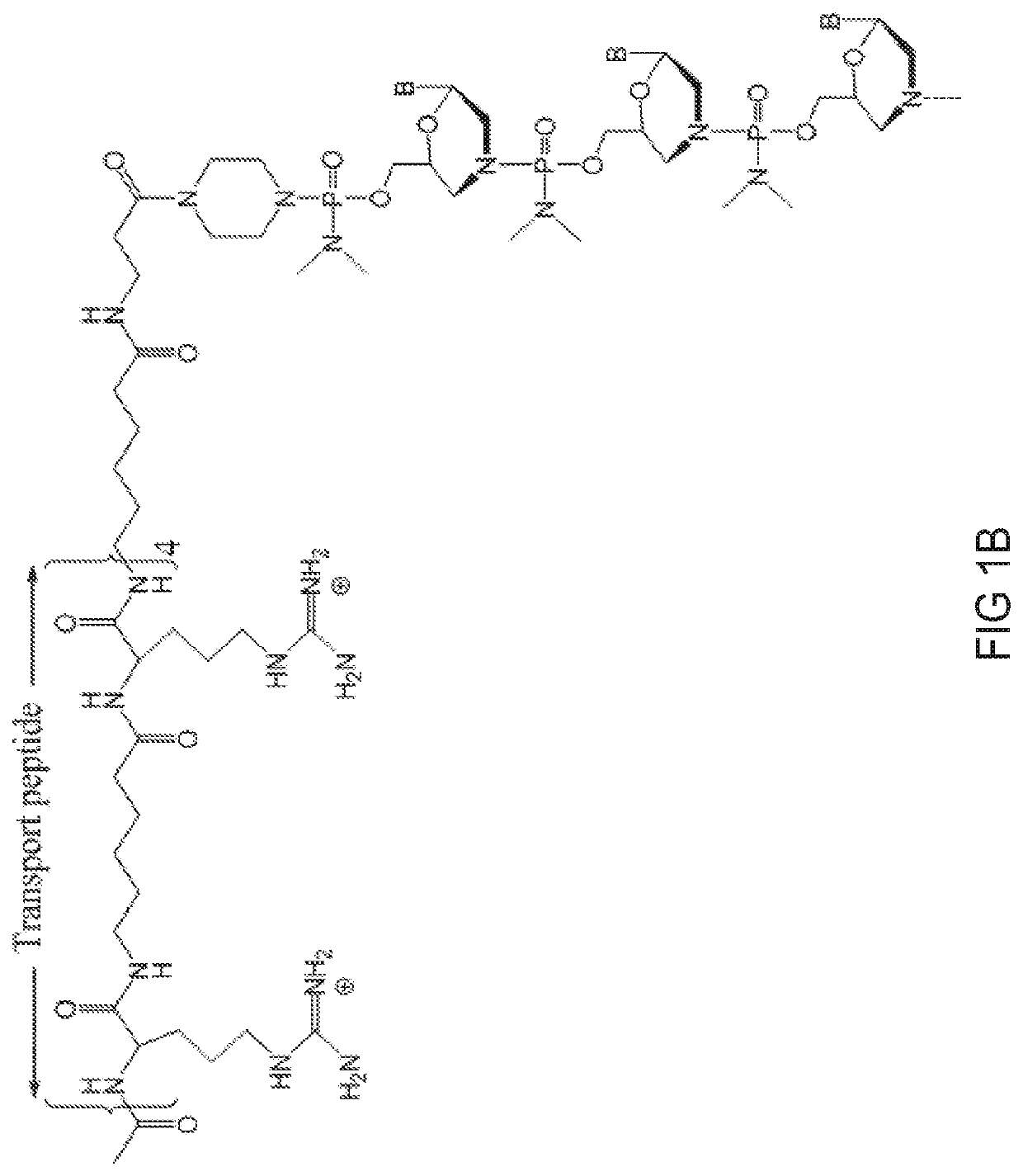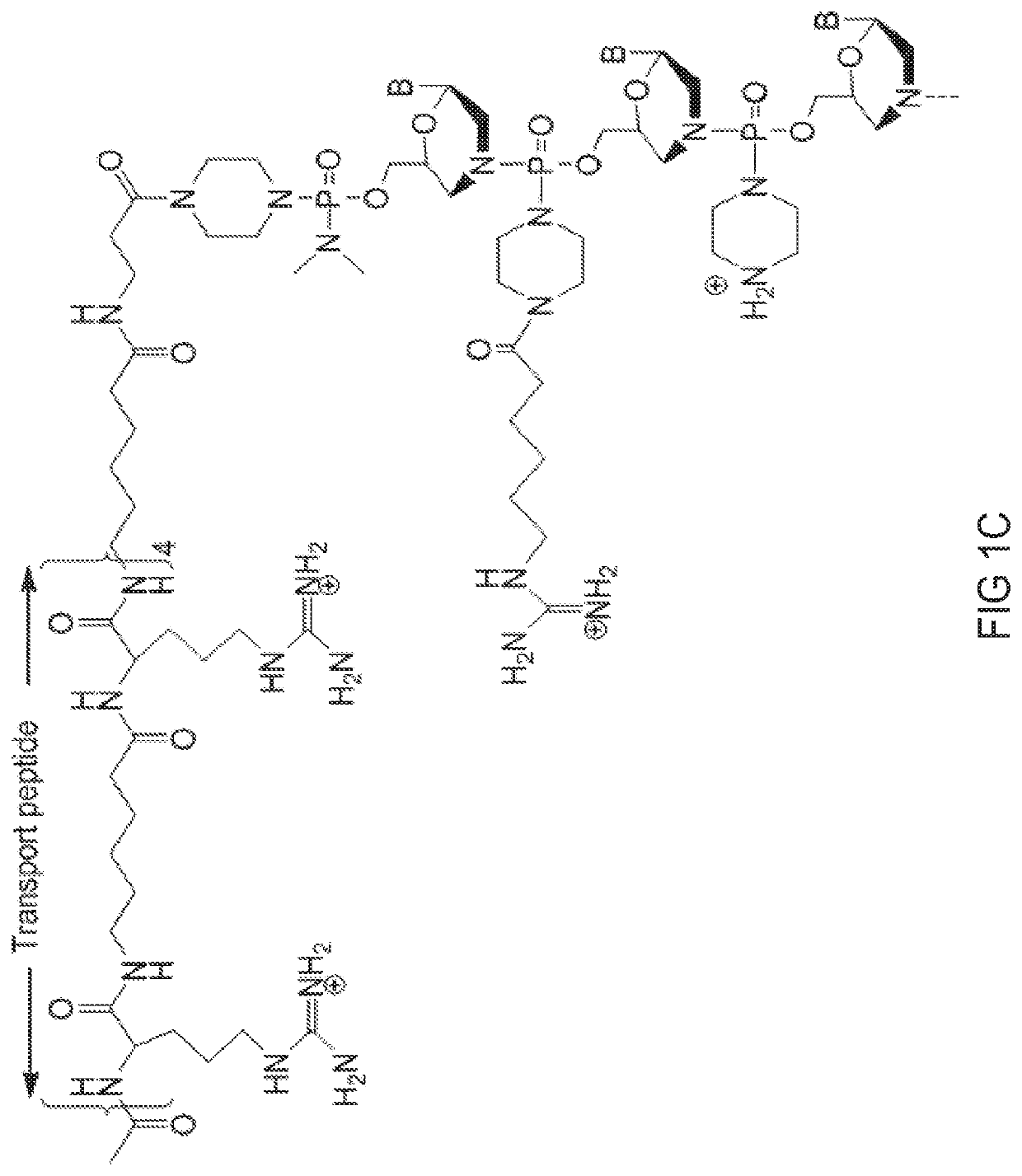Antisense-induced exon exclusion in type vii collagen
a type vii collagen and exon exclusion technology, applied in the field of antisense-induced exon exclusion in type vii collagen, can solve the problems of poor prognosis, severe blistering of skin and mucosae, structural defects of anchoring fibrils, etc., and achieve the effect of increasing the translation of human type vii collagen
- Summary
- Abstract
- Description
- Claims
- Application Information
AI Technical Summary
Benefits of technology
Problems solved by technology
Method used
Image
Examples
example 1
Design and Manufacture of Antisense Oligomers
[0474]Antisense oligomers of the disclosure were designed to bind to a target region spanning an exon 80 / intron 80 splice junction of a human type VII collagen pre-mRNA transcript and prepared using the following protocol:
[0475]Preparation of trityl piperazine phenyl carbamate 35 (FIG. 2A): To a cooled suspension of compound 11 in dichloromethane (6 mL / g 11) was added a solution of potassium carbonate (3.2 eq) in water (4 mL / g potassium carbonate). To this two-phase mixture was slowly added a solution of phenyl chloroformate (1.03 eq) in dichloromethane (2 g / g phenyl chloroformate). The reaction mixture was warmed to 20° C. Upon reaction completion (1-2 hr), the layers were separated. The organic layer was washed with water, and dried over anhydrous potassium carbonate. The product 35 was isolated by crystallization from acetonitrile.
[0476]Preparation of carbamate alcohol 36: Sodium hydride (1.2 eq) was suspended in 1-methyl-2-pyrrolidino...
example 2
In Vitro Studies of Antisense Oligomers
[0501]In vitro experiments were performed to investigate the ability of antisense oligomers designed and prepared as described above to decrease the expression of exon 80 containing human type VII collagen pre-mRNA and increase the expression of functional human type VII collagen. Both normal human dermal adult fibroblast cells (HDFa cells; cat #C-013-5C, Cascade Biologics (Life Technologies; Grand Island, N.Y.) and normal human epidermal adult keratinocytes (HEKa cells; cat #C-005-5C, Cascade Biologics (Life Technologies; Grand Island, N.Y.) were used in the experiments as noted. HDFa cells or HEKa cells were nucleofected with antisense oligomers at 10, 3, 1 and 0.3 μM in SG or P3 nucleofector solution, respectively, and incubated overnight at 37° C. with 5% CO2. Total RNA was isolated from the cells and RT-PCR was performed using primers DEB 79 FWD Set 2 (5′ TAC CAG GAG AGC GTG GTA T 3′; SEQ ID NO: 25) and DEB 83 REV Set 2 (5′ GTC CTG GAG GTC...
PUM
| Property | Measurement | Unit |
|---|---|---|
| Tm | aaaaa | aaaaa |
| Tm | aaaaa | aaaaa |
| Tm | aaaaa | aaaaa |
Abstract
Description
Claims
Application Information
 Login to View More
Login to View More - R&D
- Intellectual Property
- Life Sciences
- Materials
- Tech Scout
- Unparalleled Data Quality
- Higher Quality Content
- 60% Fewer Hallucinations
Browse by: Latest US Patents, China's latest patents, Technical Efficacy Thesaurus, Application Domain, Technology Topic, Popular Technical Reports.
© 2025 PatSnap. All rights reserved.Legal|Privacy policy|Modern Slavery Act Transparency Statement|Sitemap|About US| Contact US: help@patsnap.com



